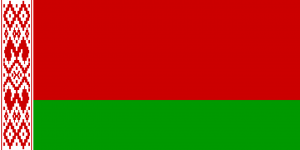Language/Belarusian/Grammar/Prepositional-Case
| ◀️ Locative Prepositions — Previous Lesson | Next Lesson — Nature ▶️ |
As a Belarusian language teacher with 20 years of experience, I know that learning the prepositional case can be a challenge for beginners. However, it's an essential part of the language, and mastering it will make communication much easier. In this lesson, we will cover the rules for using the prepositional case in Belarusian.
After mastering this lesson, these related pages might interest you: Locative Prepositions & Conditional Mood.
What is the prepositional case?
The prepositional case is a grammatical case that's used to show location or position. It's used after certain prepositions, such as "в" (in), "на" (on), "при" (near), and "по" (along).
How to form the prepositional case
To form the prepositional case, you need to add a specific ending to the noun. The ending depends on the gender and number of the noun:
- For masculine nouns ending in a consonant, add "-у".
- For masculine nouns ending in "-й", add "-і".
- For feminine nouns, add "-і".
- For neuter nouns, add "-е".
- For plural nouns, add "-ах" for all genders.
Here are some examples:
| Belarusian | Pronunciation | English |
|---|---|---|
| у лесе | u lese | in the forest |
| на вуліцы | na vulicy | on the street |
| пад столамі | pad stolami | under the tables |
| па баках | pa bakakh | along the rails |
| пры музеі | pry muzieі | near the museum |
Usage
The prepositional case is used after certain prepositions, as mentioned above. Here are some common prepositions used with the prepositional case:
- у (in)
- на (on)
- пад (under)
- праз (through)
- каля (near)
- па (along)
- з (from)
For example:
- Я жыву ў Мінску. (I live in Minsk.)
- Кніга ляжыць на столе. (The book is on the table.)
- Кошка спіць пад столам. (The cat is sleeping under the table.)
Make sure to use the correct ending for the noun depending on its gender and number.
Exceptions
As with any language, there are some exceptions to the rules for the prepositional case. For example, some words have irregular forms in the prepositional case. Here are some examples:
- здароўе (health) - з здароўем (with health)
- колькасць (number) - пра колькасці (about the number)
- грошы (money) - без грошаў (without money)
It's important to memorize these irregular forms to use the prepositional case correctly.
Practice
Now that you know the rules for using the prepositional case, it's time to practice! Here are some exercises to help you master this case:
1. Complete the sentence with the correct form of the noun in the prepositional case:
Я жыву __ Мінску.
2. Translate the following sentence to Belarusian using the prepositional case:
The cat is sleeping under the chair.
3. Use the prepositional case to complete the sentence:
Я іду __ пляжу.
Conclusion
Congratulations! You have learned the rules for using the prepositional case in Belarusian. Keep practicing and using this case in your conversations and writing, and soon it will feel like second nature.
Having concluded this lesson, consider checking out these related pages: Future Tense & Adverbs.
Other Lessons
- Infinitives
- Gender
- Prepositions
- Adjectives
- Negation
- Cases
- Imperative
- Possessive Pronouns
- Give your Opinion
- Pronouns
| ◀️ Locative Prepositions — Previous Lesson | Next Lesson — Nature ▶️ |

